Sponsored by PatSnapReviewed by Emily MageeJan 10 2023
More than 722 million wearable devices were in use worldwide in 2019. This figure is projected to hit one billion by the end of this year. From fitness monitors and body sensors that monitor health and well-being to smart jewelry and apparel, wearable electronics are altering our way of life.
Wearable medical devices, in particular, are full of innovation. These devices allow consumers to be proactive about their well-being while also enabling doctors to remotely monitor their patients.
This industry has so much promise that major IT firms are rushing to patent their wearable device intellectual property (IP). Mega companies like Microsoft, Apple, and Samsung are currently competing to provide the most cutting-edge products to their consumers.
In this article, IP and innovation trends that are impacting the future of wearable technology are discussed. These include:
- Patent application and grant trends
- Key players and emerging entrants
- Investment activity across the industry
The visual charts and graphs presented in this article were sourced from PatSnap’s Al-powered innovation intelligence platforms: Analytics, Discovery, and Insights.
These systems collect diverse data from patent applications, issued patents, technology headlines, mergers, acquisitions, and venture capital investments to connect the dots.
These insights were merged with reports from credible sources to create a comprehensive, 360-degree overview of where the industry stands today and where it is headed.
Introduction
Wearable devices, also known as “smart devices,” are worn close to the skin on the body. Smart apparel and jewelry are some examples of such devices. These devices are designed to collect and monitor data from everyday activities over a specified period.
In the United States, 30% of adults use wearable electronics to track their health and well-being. Wearable devices are impacting the healthcare sector in several ways, including daily step tracking, heart rate, and blood pressure monitoring, sleep pattern analysis, and fitness reminders.
This raises an important question: How will wearable technology affect healthcare providers and patients?
According to a recent study, the wearable technology market was valued at over $115.8 billion in 2021 and is anticipated to reach a $380.5 billion valuation by 2028. Apple, Google, Informa, Samsung, and Amazon are among the leading wearable technology companies.
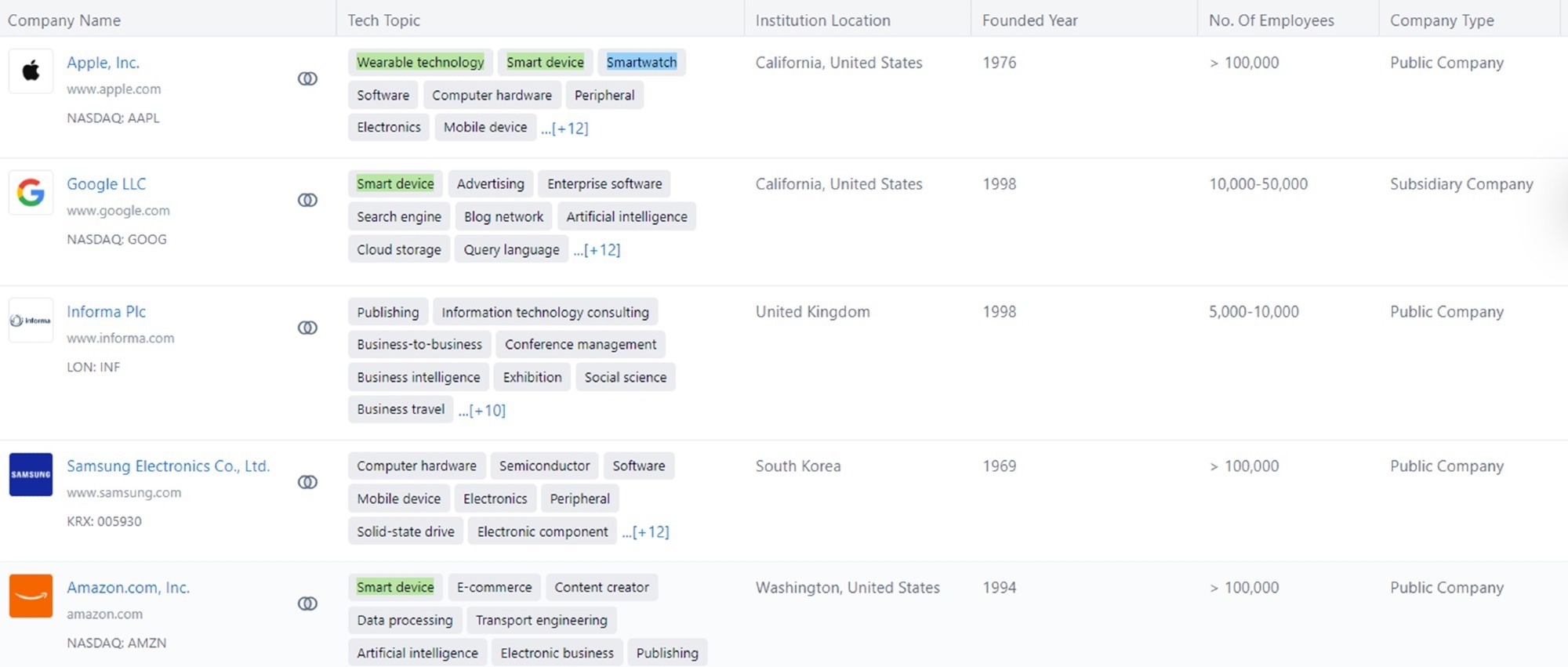
Image Credit: PatSnap
Wearable Medical Devices: A Landscape Overview
Many factors must be considered while analyzing IP in the wearable medical technology sector, including:
- Patent legislation as it is linked with hardware developments (physical product attributes)
- Software developments (the technology behind the product)
- Current medical device technology capabilities
A targeted patent search is critical for companies trying to innovate and succeed in this industry. This process reduces potential infringement risk while allowing companies to validate concepts and identify potential opportunities.
Challenges to Patenting Wearable Medical Technology
The graph below depicts patent trends in the healthcare industry as they relate to wearable technologies. Green lines represent granted patents, dark blue lines indicate patent applications and light blue lines show projected future application trends.
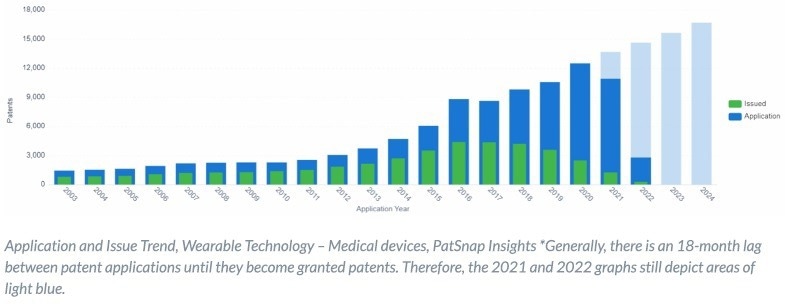
Image Credit: PatSnap
Patent applications for wearable devices have been on the rise consistently since 2016. However, the industry is still in its infancy and working through the wrinkles, including the jurisdictional laws related to patentability.
In Europe, the legislation states that wearable devices falling under “digital health” can be patented similarly to conventional medical devices. However, obtaining software-related patents in Europe has its challenges.
For example, patentable software must have a “technical impact.” Therefore, modifying the software for a wearable medical device that collects sensor data at unpredicted times can make the device patentable.
The healthcare industry and related innovations take into account several medical exclusions, such as whether they involve techniques to treat human or animal bodies by surgery, treatment, or other diagnostic activities. This is because these practices cannot be patented.
Companies can circumvent these obstacles by rewriting their patent specifications and linking them to specific medical applications rather than therapeutic approaches.
Patent laws related to “digital health” are different in the United States. The Supreme Court has ruled that although “abstract ideas” cannot be patented, “inventive concepts” can be patented. As far as the Supreme Court is concerned, digital health inventions lie within the umbrella of “abstract ideas.”
In one instance, the Court of Appeals for the Federal Circuit ruled that a patent for a platform that enables medical professionals to communicate with patients in real time and transfer health information could not be approved because it is an abstract idea.
Regardless, abstract concepts that have an “inventive notion” may be patented. To be successful, inventors must highlight the technical advancement or practical applications of the abstract idea in question.
It can take as long as two years for a patent to get from the application stage to the approval stage. This process is complicated further by the US Food and Drug Administration’s (FDA) approval procedure.
To protect and sell their products, companies also need to obtain clearance from regulatory organizations like the FDS and patent offices.
Companies can apply for a patent term extension under the Hatch-Waxman Act to reduce infringement concerns during this period. This extends the patent’s lifetime by up to five years in cases when the patent owner is unable to utilize their patent rights owing to FDA delays.
The patent term extension must be submitted to the United States Patent Trade Office (USPTO) within 60 days of the FDA product application date.
Wearable Medical Devices: Patent Landscape
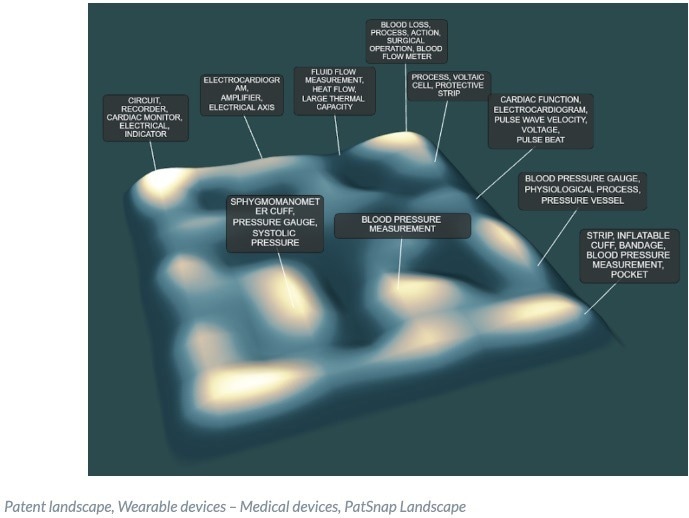
Image Credit: PatSnap
The above figure shows a topical landscape of wearable devices within the medical equipment industry. Based on the troughs and peaks, this landscape shows where patent activity is high and where it is low.
Analyzing low points in the market for potential opportunities is a good idea, as these points can indicate future hot spots where companies will infiltrate the industry.
The graph below shows that blood pressure and cardiac devices remain important for many companies. This makes sense since the technology and sensors already exist, making it easier for companies to innovate and make minor changes without reinventing the wheel.
Additionally, manufacturers are available, making it simpler to take an idea from concept to commercialization.
Apple intends to make additional improvements to the Apple Watch to improve its cardiovascular measuring capability. These updates will allow users to monitor their blood pressure, which may be a lifesaving feature.
High blood pressure affects 108 million individuals in the United States alone and is responsible for more than 500,000 deaths annually.
Implementing these updates is not an easy process. FDA approval is a necessary pre-requisite for any such improvement, which can take years. However, even if these updates are implemented, they may not have the desired effect.
Smartwatches cost between $100 to $400, and the communities that would benefit the most from these updated capabilities are mostly low-income households.
To genuinely disrupt the healthcare market, particularly early sickness detection, governments, private firms, and insurance companies must work together to make these devices as accessible as medications to people who need them the most.
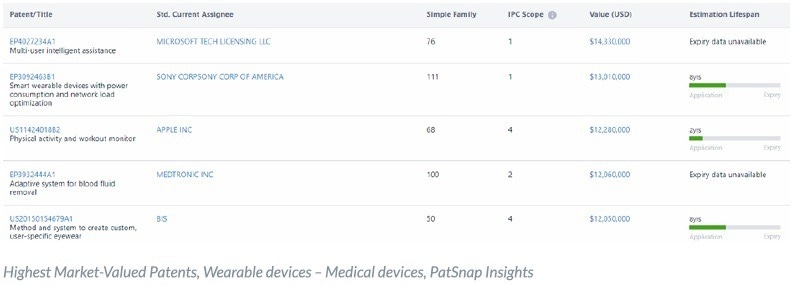
Image Credit: PatSnap
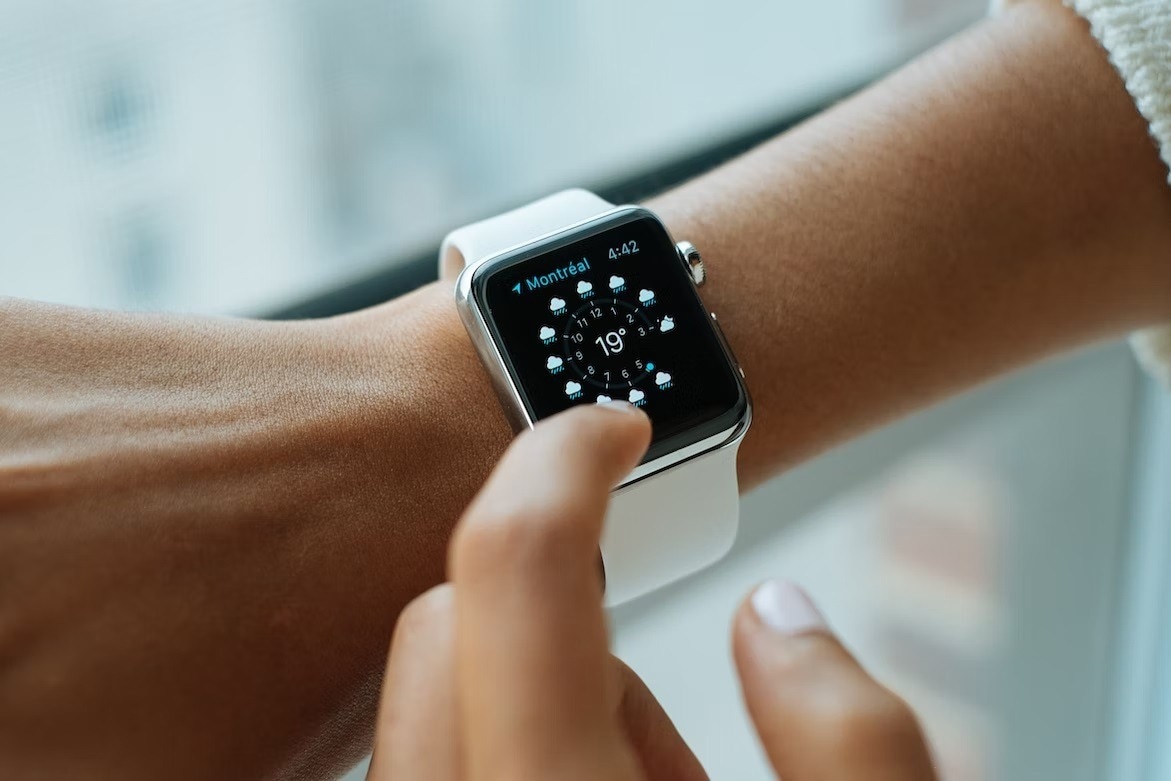
Image Credit: PatSnap
Key Wearable Device Patents
As the number of patents issued grows, the startups and technology-based merger and acquisition (M&A) investments will also increase.
PatSnap’s indicator-based patent valuation technique neutralizes vendor or buyer interest by using a collection of electronically accessible data. It takes into account more than 80 indicators, carefully selected by combining external research sources with PatSnap’s internal research and experience.
Many important factors, such as economic worth, technological strength, strategic value, market potential, and legal value, are analyzed during the valuation process. The patent graph shown above indicates the top five most valuable patents in the wearable devices industry.
Interestingly, Medtronic’s patent is ranked fourth, below huge commercial firms like Microsoft, Sony, and Apple. These companies are successfully transferring their technology to adjacent markets, resulting in valuations of $13,000,000 and more.
Valuations support strategic choices and business direction, which are often recommended by IP/legal experts and professionals.
Certain patents may be assigned a value that ties directly to revenue. For instance, patented technology that promotes the purchase of a specific product and commands a premium price will influence the overall valuation of the patent. However, this is not a black-and-white situation.
The valuation of a patent is often not directly related to income and is judged against other considerations, such as its effectiveness in keeping rivals at bay.
Painting a Comprehensive Picture of the Medical Device Wearable Industry
As discussed in the previous section, bringing new devices to market is challenging in any industry, but it is extremely difficult in the healthcare sector. As a result, running a patent analysis alone is not adequate since the top filers are usually not the industry leaders.
Instead, patent insights must be combined with other leading indicators, such as technological news, investment activities, and market trends. These data points, when combined, guarantee that firms operating in the wearable device market can minimize risks associated with infringement and failures. This is why the next section focuses on innovation activities.

Image Credit: PatSnap
Traditional “medical device” companies have difficulty competing with established tech giants in the wearable medical device market. Although this seems counterintuitive, it makes sense considering the prominence of medical device companies such as Johnson & Johnson MedTech and Medtronic.
Apple, LG Electronics, Samsung, Qualcomm, and other large firms have huge investments and the knowledge required to create the software and hardware for wearable MedTech devices.
Innovation is just one side of the coin. To protect and sell their ideas, these companies must also get clearance from regulatory bodies such as the FDA and patent offices.
With competition increasing by the day and more money invested in research and development than ever before, many companies are collaborating through mergers and acquisitions (M&A). M&As help to decrease costs while maximizing impact and efficiency.
Softheon, Inc., a New York-based company that recently acquired NextHealth Technologies, is one such example.
NextHealth is an Al-powered, healthcare-based software-as-a-service (SaaS) analytics service. Its platform is designed to relieve the burden on healthcare professionals by allowing users to track their daily readings (such as heart rate and blood pressure).
Softheon’s go-to-market strategy is significantly strengthened by this merger. This strategy will also improve its engineering process, resulting in more competitive and robust products. By developing Al in health services, these two companies want to give more inexpensive healthcare solutions to vulnerable individuals while improving the quality of care.
Although this is only one example, it demonstrates why mergers are appealing to many companies operating within the wearable medical devices industry.
VC Investment Activity in the Wearables Sector

Image Credit: PatSnap
Wearable technology is attracting more investors as it continues to develop in popularity. This is particularly clear when looking at statistics from the last six years. There has been a noticeable increase in patent applications. The industry is not expected to slow down any time soon, with a CAGR of 13.67% projected between now and 2027.
With an aging population, it is expected that the demand for wearable medical devices will increase, particularly as chronic conditions such as heart disease and diabetes become more common.
According to the World Health Organization (WHO), chronic diseases claim the lives of an estimated 41 million people each year. Physical fitness and good eating habits are important in countering many of the negative externalities associated with these conditions.
Wearable devices make it simpler for patients to track their physical activity and food intake and share the data with healthcare professionals, often in real time. Since there is no lack of prospective clients, these market insights make the wearable medical device sector a desirable venture for many investors.
Another appealing feature for investors is the regulatory approvals in place in certain jurisdictions, such as those in the United States. For instance, the FDA approved Biobeat’s remote patient monitoring device in March 2022. This device monitors respiratory rate, body temperature, cuffless blood pressure, blood oxygen levels, and pulse rate.
Biobeat received 510(k) approval for this wearable device, which means the FDA approved it as a device that is “safe, effective, and substantially comparable to a legally-marketed device.” Submitting a 510(k) permits medical device firms like Biobeat to release new products without going through clinical trials or testing, saving time and money.
Closing Comments
There is little doubt that wearable medical devices are reshaping the healthcare industry. It is anticipated that wearable devices will continue to develop, from smart watches and jewelry to clothing and beyond, particularly as the population ages and people become more empowered with their self-care practices.
Companies must remain steadfast and strategic in how they approach, and apply for, IP protections. This reduces the possibility of infringements while increasing the likelihood of short- and long-term success.
To utilize these insights to make educated business choices, companies will need to carefully monitor and evaluate the patent activity and innovation trends.
PatSnap’s Al-powered innovation intelligence platform, Discovery, can be used to learn more about trends influencing wearable medical devices, as well as other IP or innovation trends.
The subscription is free, providing instant access to billions of global data points on investment activity, academic publications, technological news, and patents.

Image Credit: PatSnap
PatSnap assumes no responsibility for the accuracy of data and information obtained from patent authorities and Commercial Databases. PatSnap and its affiliates hereby explicitly disclaim any liability or responsibility for the accuracy, completeness, or usefulness of any information and opinions included in this report.
Any decisions or actions taken by any party based in any way whatsoever on the contents of this report are solely the responsibility of that party. In no event shall PatSnap or its affiliates be liable for any losses, damages, claims, liability, costs, or expense (including legal expenses) or consequential or indirect financial loss or loss of profit, loss of earnings or revenue, loss of use, loss of contract or loss of goodwill arising from the publication and use of this report to the fullest extent permissible by law.

This information has been sourced, reviewed and adapted from materials provided by PatSnap.
For more information on this source, please visit PatSnap.